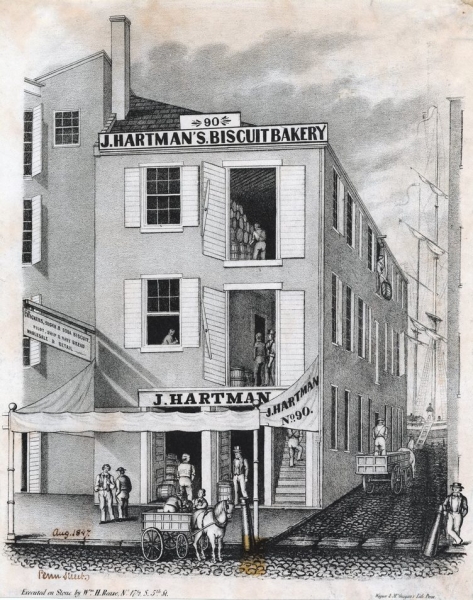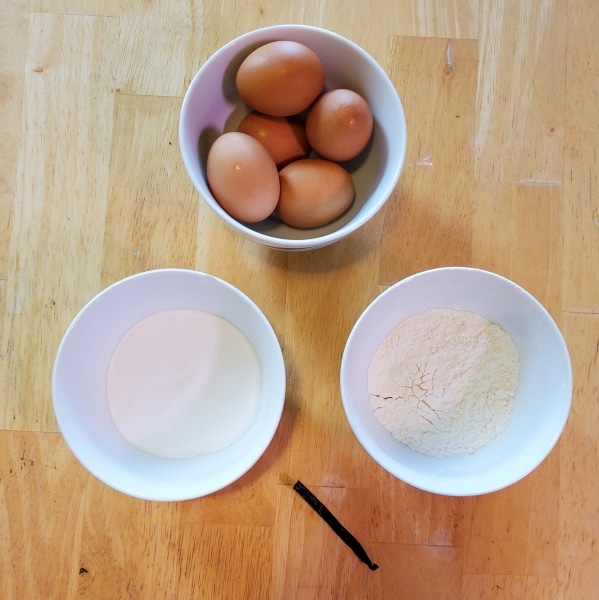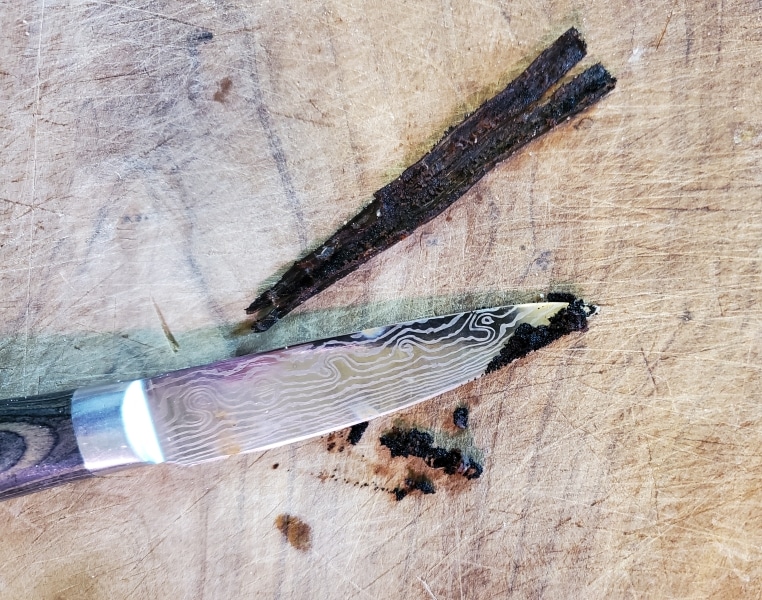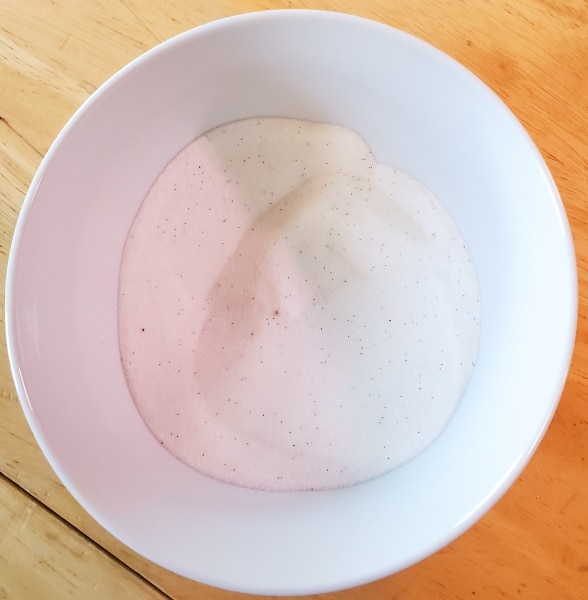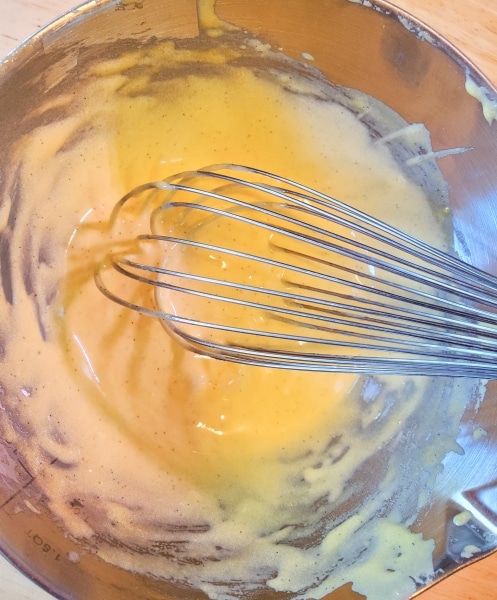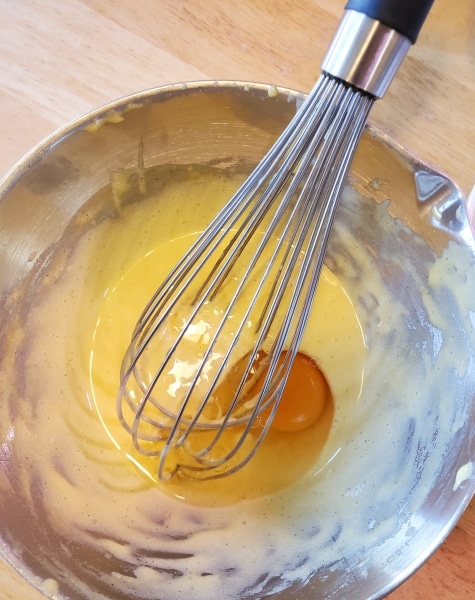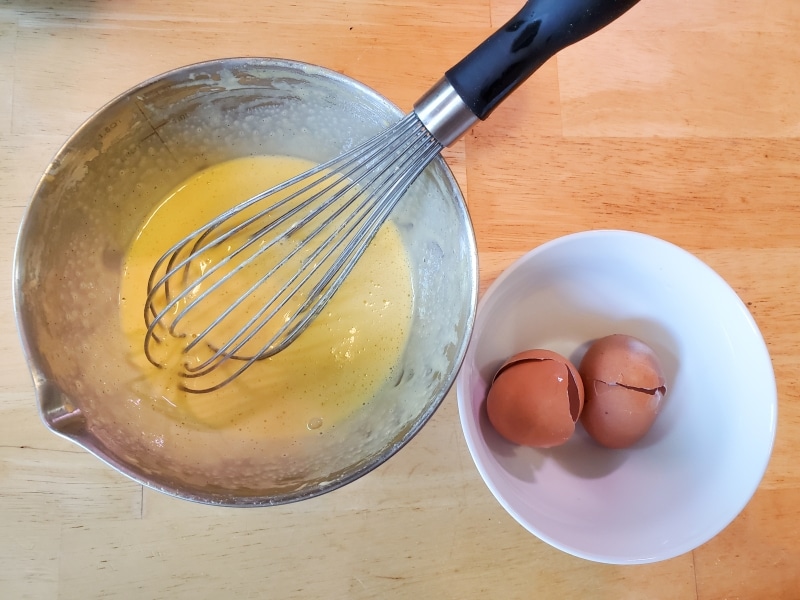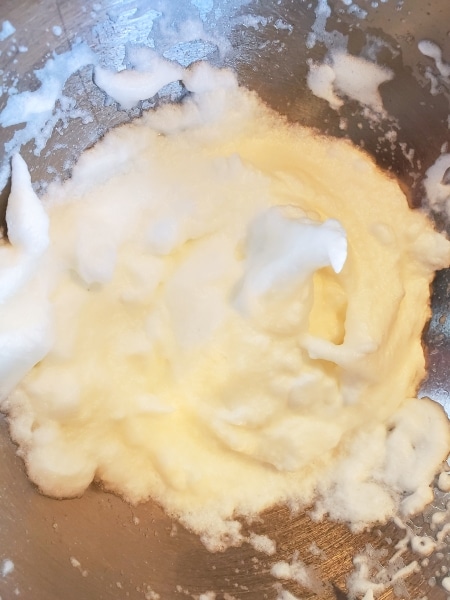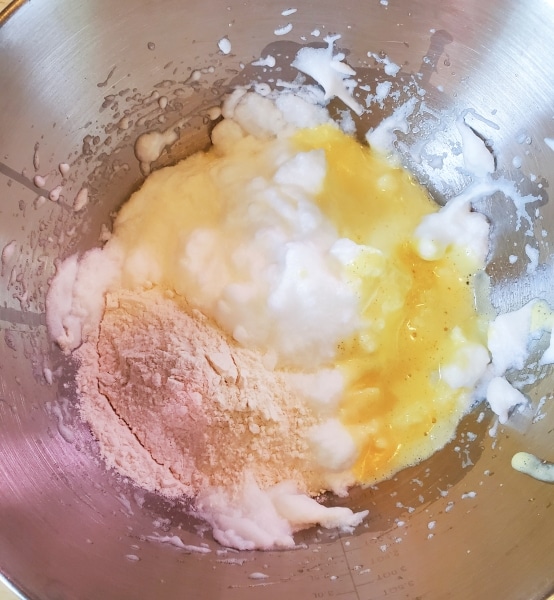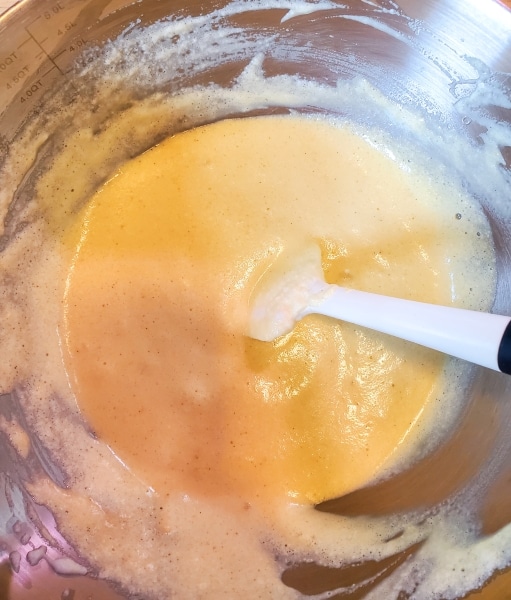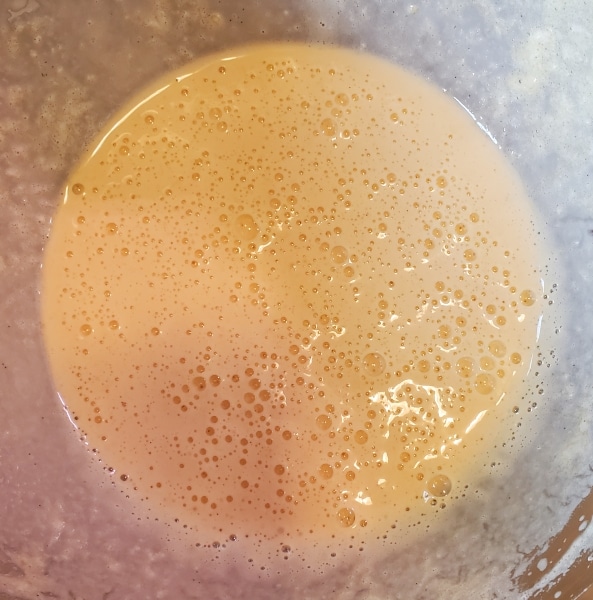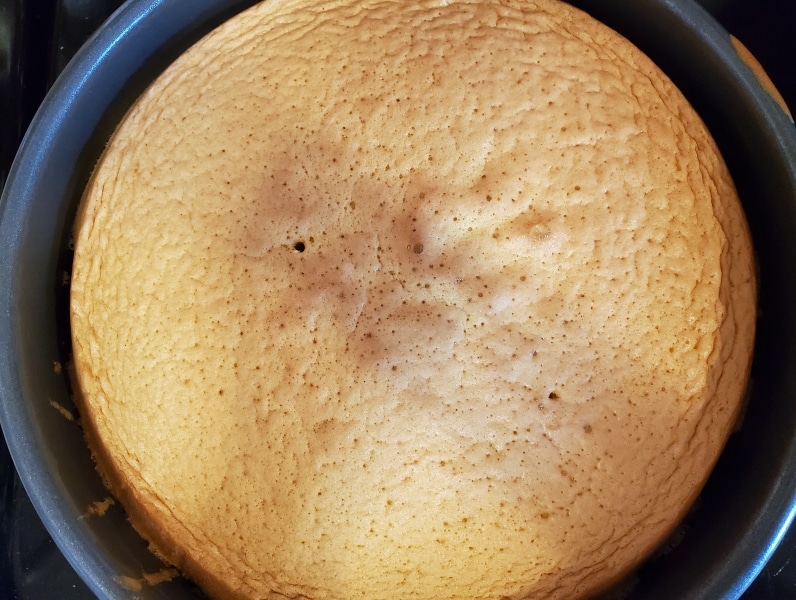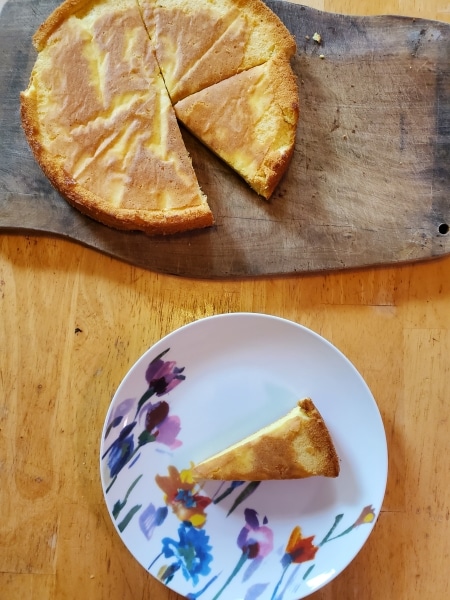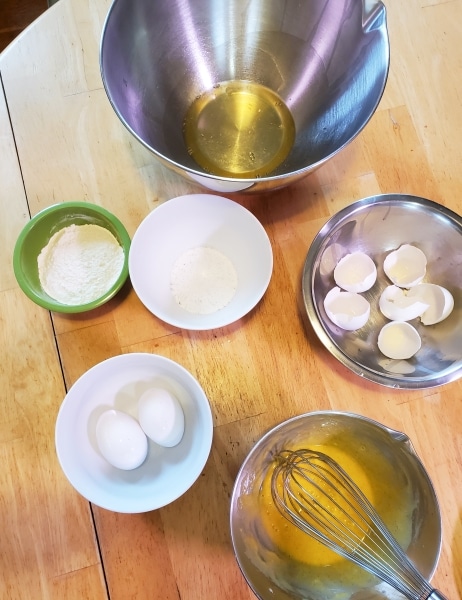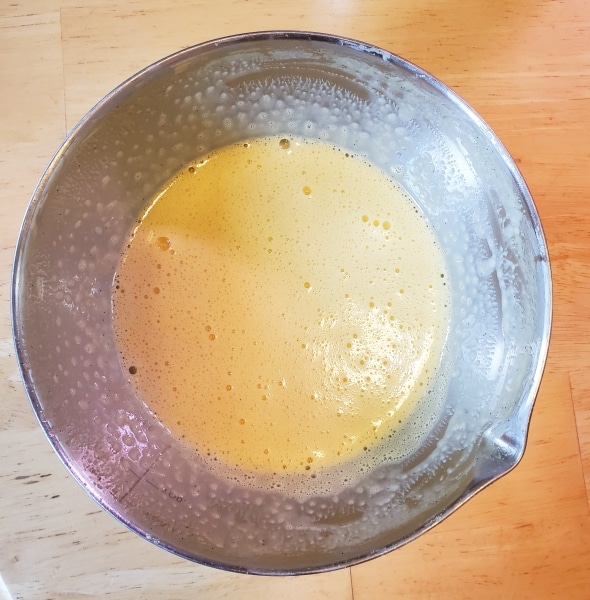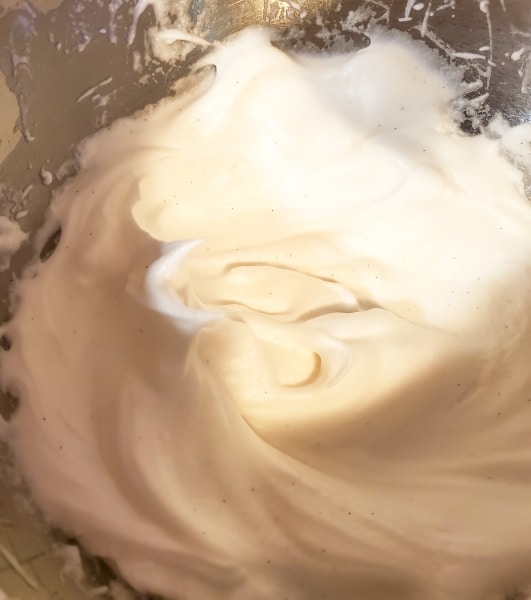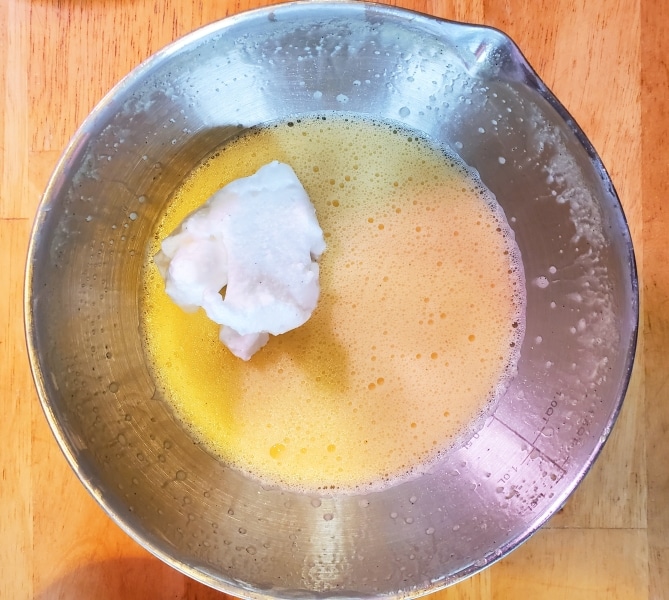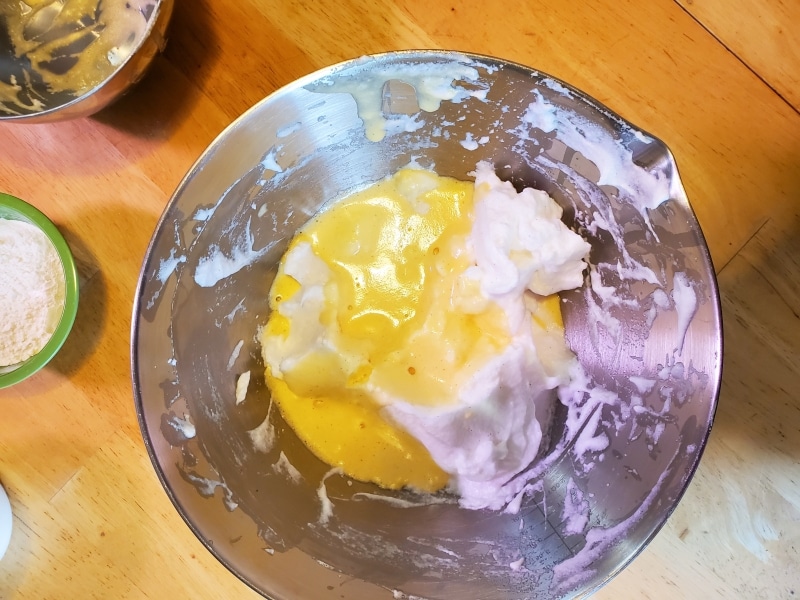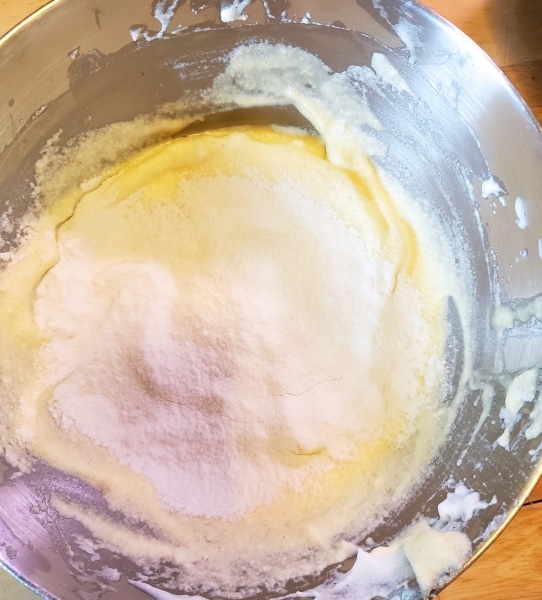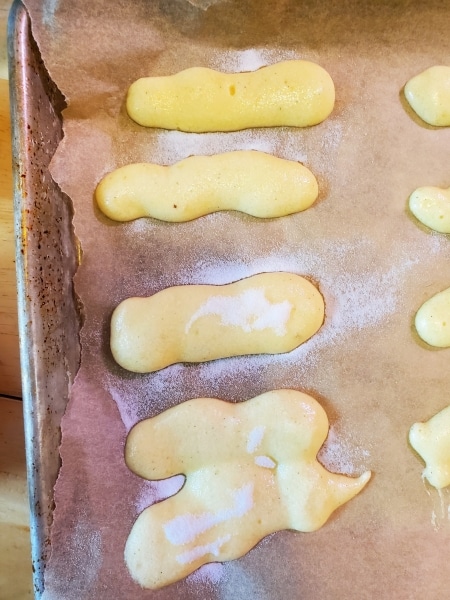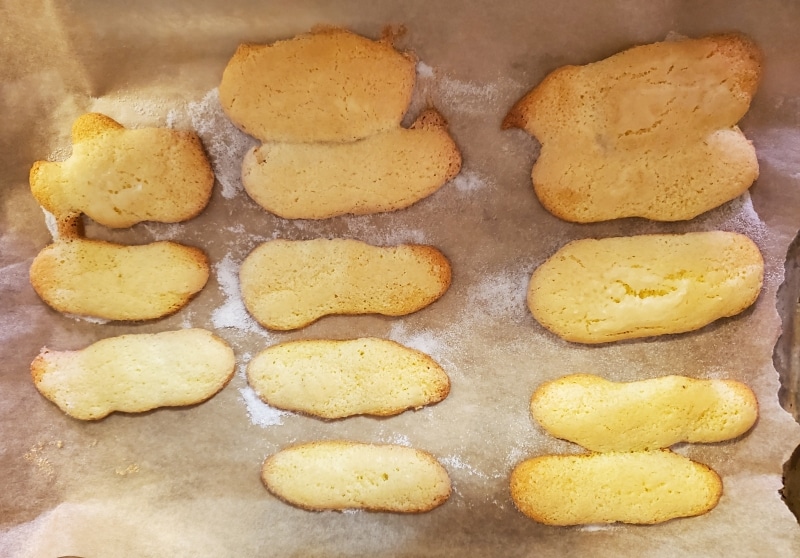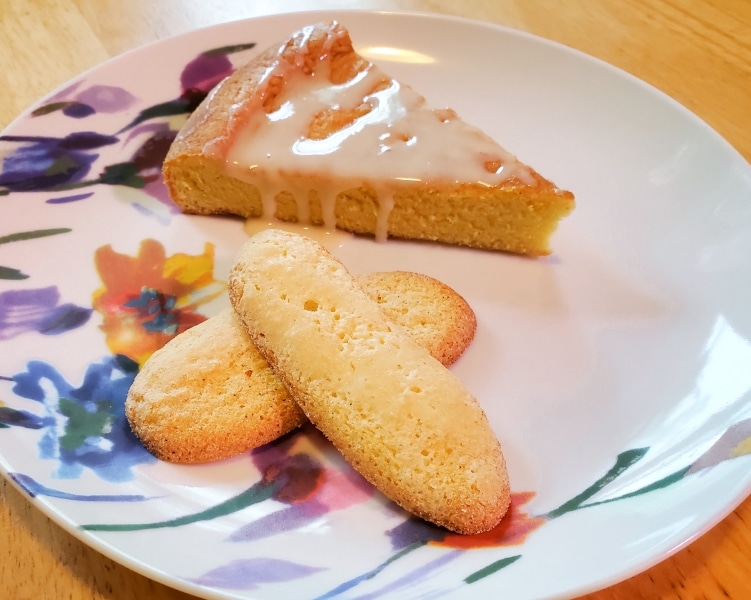Biscuit a la Cuillère (Spoon Biscuit)
Katie Maxwell, Visitor Services and Design Coordinator
During the course of my research for the seminar, Philadelphia at the Table: Treasures of The Larder Invaded, I’ve been attempting to recreate dishes I find in menus, trade cards, and other ephemera. I was inspired by this image to create some form of 19th century biscuit.
W.H. Rease. J. Hartman’s biscuit bakery, No. 90 Penn Street, Philadelphia, 1847. Lithograph.
While at first I was thinking of modern American biscuits, I quickly realized that a biscuit might be something different in 1847, possibly more like a cookie. I found this recipe on page 119 of the 1844 book, The Complete Confectioner by Eleanor Parkinson (James Parkinson’s mother):
Biscuit a la Cuillère (Spoon Biscuit).–Mix the yolks of three eggs with four ounces of fine sugar and half a clove of vanilla powdered and passes through a silk sieve; after working these ingredients for five minutes, add a whole egg, then work them again for five minutes; after which add another whole egg and continue to work them for five minutes longer ; then beat up the whites of the first three eggs to a very stiff froth, and mix them, together with two ounces of dried and finely sifted flour, to the former ingredients: when the batter is quite sleek, lay out on paper, and bake as lady-fingers.
Knowing how renowned the Parkinson dynasty was for their sweets, I think this recipe will be a good bet.
First, let’s separate out those ingredients:
5 eggs
2 oz sifted flour
Half a vanilla bean
4 oz superfine/caster sugar (plus extra for dusting)
Mix the yolks of three eggs with four ounces of fine sugar and half a clove of vanilla powdered and passed through a silk sieve; after working these ingredients for five minutes,
I don’t have a silk sieve, so instead I scrape the seeds out of half of the vanilla bean,
And rub them into the sugar before sifting the mixture through a fine mesh sieve.
I think this is working. Here is how it looks like after being beaten with the egg yolks for five minutes:
Light and creamy! So far so good.
add a whole egg, then work them again for five minutes;
Five minutes feels very long when beating eggs, so I set the timer on my phone to be sure.
after which add another whole egg and continue to work them for five minutes longer;
I kind of feel like I’m making eggnog and must resist the urge to drink raw eggs.
then beat up the whites of the first three eggs to a very stiff froth,
This is as stiff as I can get the egg whites with my hand mixer.
and mix them, together with two ounces of dried and finely sifted flour, to the former ingredients:
This doesn’t look like very much flour compared to the eggs.
when the batter is quite sleek, lay out on paper […]
I’m not sure this is right. It looks too fluid, and when I drip a bit onto a cutting board it immediately spreads to the edges of the board. Maybe if I beat it with the hand mixer, I can incorporate some air…
Well, this is much worse. Since there is no hope of producing biscuits, I’m just going to bake it in a cake tin at 350°F and see what happens.
About 20 minutes later:
I do believe this has become cake.
I’ve never made it before, but I’m pretty sure this is sponge cake. It is reasonably tasty, if a bit eggy.
I still have that other half of the vanilla bean, so I’m going to give this recipe another go.
I think if I add some of the sugar to the egg whites, it will help stabilize them. Also, after watching several French people make ladyfingers on YouTube, I’ve realized that I should have sifted the flour into the batter.
Now for spoon biscuits, take two:
I separated out a third of the vanilla sugar to add to the egg whites (as of this picture, I’ve already added the remaining sugar to the egg yolks).
After adding the two whole eggs with appropriate beating times, the yolk/sugar mixture looks just as creamy as it did last time.
And the egg whites can hold glossy peaks without any difficulty.
Adding the more liquidy yolk mixture to the egg whites was rather tricky. So this time I’m mixing a bit of the whites into the yolks then adding the resulting mixture into the rest of the egg whites.
It seems to be working.
Now for the flour.
After carefully folding it all together, I need to figure out how to turn it into biscuits. Parkinson says to “lay out on paper, and bake as lady-fingers.” Fortunately her ladyfinger recipe is also on page 119 of The Complete Confectioner. She explains how to form the biscuits in the last paragraph:
Then form your biscuits on half sheets of white paper, folded in such a manner that they are only three inches in length and no larger than your finger. As soon as one sheet is full, cover your biscuits with fine sugar […] put in the oven as soon as the surface of the biscuits become glossy by the melting of the sugar. Bake in a moderate oven, and when they have acquired a fine colour take them out […]
I’m not positive, but I believe I’m supposed to pipe the batter into the correct shape. Although my piping skills leave something to be desired, the caster sugar starting to melt and become glossy.
Assuming a “moderate oven” is somewhere near 350°F, I put them in and watch closely. After about 10 minutes, I think they have achieved a “fine colour.”
While the biscuits are still hot, they’re impossible to remove neatly from the parchment paper, so while they cool I finish the remaining batches. This recipe makes quite a lot of biscuits.
Once all that is done, I can finally taste them.
The biscuits have a pleasantly crisp exterior, aided by the admittedly unevenly melted sugar, and a soft interior. They do not taste eggy. I took the liberty to add a simple lemon glaze to the accidental sponge cake. The biscuits also seem to weigh nothing making it easy to eat an entire tray.
On another note, it turns out I was not far off in the creation of the accidental sponge cake. Another cookbook writer, Sarah Tyson Rorer includes a recipe for ladyfingers on page 503 of her Philadelphia Cook Book (1886) that states, “Make Sponge Cake batter, turn it into a pastry bag […]”
It makes me wonder if the same mishaps happen to bakers no matter what the century.

